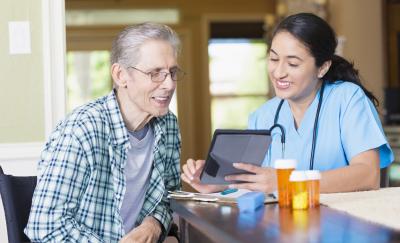Do No Harm. And If There Already Is Some, Reduce It.


The $1 trillion War on Drugs failed, and millions of people in the United States live with the consequences of endemic addiction. Overdose deaths have soared 1,576 percent since former President Richard Nixon declared war on illegal drugs--from 6,771 in 1971 to 106,699 in 2021. Millions more live with substance use disorders. Overdose deaths from prescription opioids alone rose 1,000 percent from 1999- 2021. Heroin, then non-prescription drugs, often laced with fentanyl, picked up the slack from a drop in prescription overdoses so that the total overdose deaths continued to rise. And the ever-adaptable drug supply is changing again, with a rise in use of deadly drugs such as xyaline and other substances not reversible with naloxone.
So we need a Plan B. Few experts now would dispute that substance use disorders are a behavioral health issue—one of ever-growing proportions. With relapse rates ranging from 40-60 percent, drug misuse is not easy to curb. That’s why some thoughtful communities have increased their focus on a harm-reduction approach, as opposed to a prosecutorial war that criminalizes people who use drugs. What’s needed, they concluded, was to support expansion of treatment to a variety of settings to meet people where they are. “Instead of trying to eradicate drug use, we should focus on minimizing its worst effects,” Dr. Daliah Heller, the vice president of drug use initiatives at the nonprofit Vital Strategies, told the New York Times.
The toolkit of harm reduction techniques continues to expand. It started with distributing syringes and safe smoking kits, naloxone, and fentanyl test strips. Now cities and communities are engaging in innovations in direct outreach and service to people with substance use disorders (SUD). For example, OnPoint NYC has a mobile outreach van that supports people with SUD on street corners and in shelters for those experiencing homelessness. The advocacy group for people who use drugs and sex workers also has a physical location that includes a safe consumption site for drug use under the watchful eye of people who can help in an emergency.
For such programs to succeed, people with lived experience—those who have had SUD—must play critical roles in outreach and linking people to care programs such as peer respite centers. Twelve states from California to Vermont have these voluntary, short-term, overnight programs, which provide community-based, non-clinical crisis support to help people move forward. They operate 24 hours per day in a homelike environment.
Those with lived experience can take roles in behavioral health or other health services, including serving as peer recovery specialists. Those with a history of SUD have credibility because of their experience. They understand what those they’re trying to help are thinking and doing and can offer practical support. As they help people stay engaged in the recovery process, reducing the likelihood of relapse, peer recovery specialists can extend the reach of treatment beyond clinical settings into the everyday environment of those trying to recover. “Peer workers are emerging as important members of treatment teams,” according to the Substance Abuse and Mental Health Services Administration.


Multiple cities have implemented confidential drug testing opportunities, which enable people who use drugs to know what’s in the drugs they’re using. The testing also enables public health professionals to recognize and track drug supplies. StreetCheck, for instance, is a community-partnered project at Brandeis University’s Opioid Policy Research Collaborative to develop and standardize sample collection and reporting for community drug checking programs. It streamlines illicit drug sample collection through the use of a free mobile-based application, which speeds analysis of the samples and makes it easier to communicate results back.
Medical toxicologists review samples from communities, groups, and police departments, then disseminate the findings in English, Spanish, and Portuguese. According to a study of the program, the 427 samples tested in 2020 showed that 47.1 percent were positive for fentanyl. By early 2021, the program “detected shifts in cocaine purity, alerted communities of a new toxic fentanyl analogue and a synthetic cannabinoid contaminant, and confirmed the increase of xylazine (a veterinary sedative) in Massachusetts,” the study said.
Some cities, including Boston, are tracking amounts of drugs in wastewater in the same way public health officials track COVID-19. A bio-sensor the size of a penny developed by researchers from Boston College, Boston University, and Giner Labs can use wastewater to measure opioid use down to the block or dorm level. This avoids the cost and stigma of individual testing while quickly producing important data on drug use.
The analyses “would help to identify areas where additional resources are required and which opioids are being used in those areas, “ said Boston College physics Prof. Kenneth Burch, who helped develop the sensor. “In addition, it could be used in epidemiological studies to see which interventions work and which do not. This would be far easier and more reliable then typical methods that require taking samples from subjects.” The interventions could include harm reduction initiatives.


Of course some areas continue to take the criminalization approach. More than a dozen states have increased penalties for fentanyl for both sellers and users. But history suggests that another war on drugs won’t work much better than the previous one.
Will the harm reduction approach be more effective? An article in Pediatrics leaves little doubt it can be. It notes that decades of evidence show that “many harm reduction strategies are highly effective in decreasing the transmission of infectious diseases, preventing overdose, and reducing other sources of morbidity and mortality among people who use substances, including young people who use illicit drugs.” An additional benefit is that these programs offer access to health care and treatment.
Newer approaches may require further study to assess their effectiveness. We need to know everything that can work to stop the steady climb in drug-related deaths. At the very least, we need to reduce drug-related harm. But we also must change mindsets and and funding priorities to create a Peace Agreement on Drugs rather than a War on Drugs. Ultimately what’s needed is an environment where those with SUD can get the medical support they need to treat SUD as the disease it is, not the crime that it isn’t.
Read More
Opioid Misuse & Prevention in North America

Managing Opioid Use and Misuse in Older Adults
Older adults are twice as likely as the general population to have pain, and clinicians often rely on opioid treatment. As a result, opioid use, misuse, and opioid use disorder have increased among older adults, who are vulnerable to adverse reactions…

Spotlight On: Primary Care
Abt’s experts partner with federal agencies, states, and other organizations to advance evidence-based primary care in the U.S.

American Public Health Association (APHA) 2024 Annual Meeting & Expo
Abt is a sponsor and exhibitor at the American Public Health Association (APHA) 2024 Annual Meeting & Expo in October 2024.

Factors That Affect Opioid Quality Improvement Initiatives in Primary Care: Insights from Ten Health Systems
This study of an Opioid Quality Improvement Collaborative can help providers adopt CDC opioid guidelines and improve their prescribing practices.